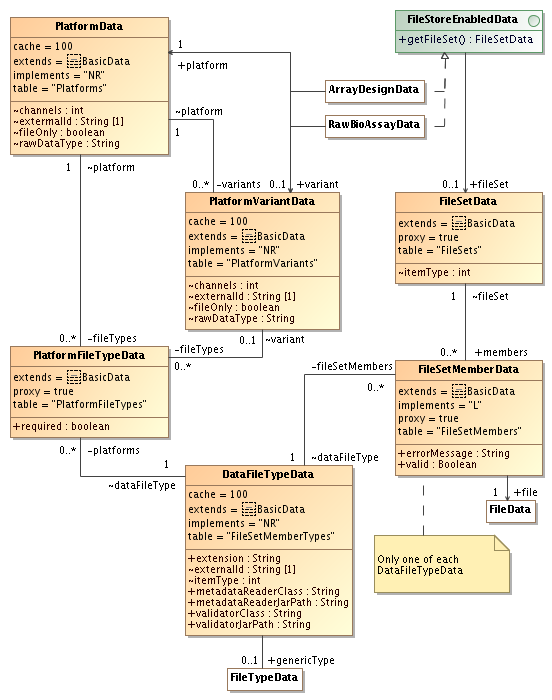This section gives an overview of experimental platforms and how they are used to enable data storage in files instead of in the database.
See also
The PlatformDataPlatformVariantfileOnly flag is set data for the platform
can only be stored in files and not imported into the database. If
the flag is not set data can be imported into the database.
In the latter case, the rawDataType property
can be used to lock the platform
to a specific raw data type. If the value is null
the platform can use any raw data type.
Each platform and it's variant can be connected to one or more
DataFileTypeData
The file type is also identified
by a fixed, non-changable external ID. The itemType
property tells us what type of item the file holds data for (ie.
array design or raw bioassay). It also links to a FileTypeFileType.RAW_DATA. If we are in an Affymetrix
experiment we will get the CEL file, for another platform we will
get another file.
The required flag in PlatformFileTypeData
An item must implement the FileStoreEnabledDataFileSetDataFileSetMemberDataFileDataDataFileTypeData
